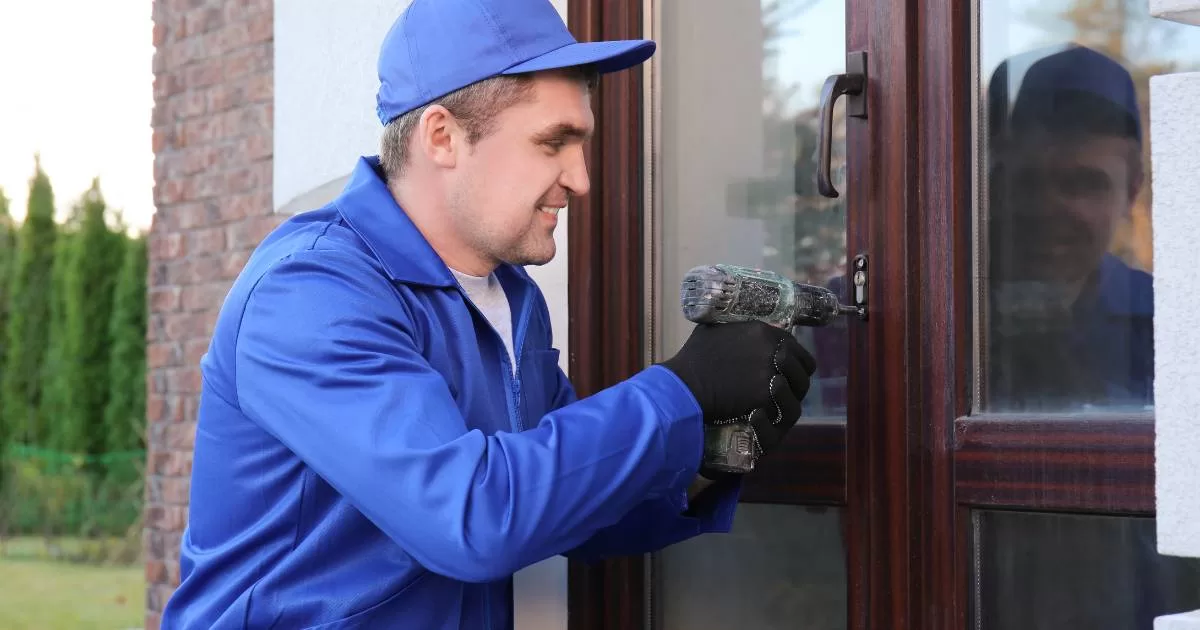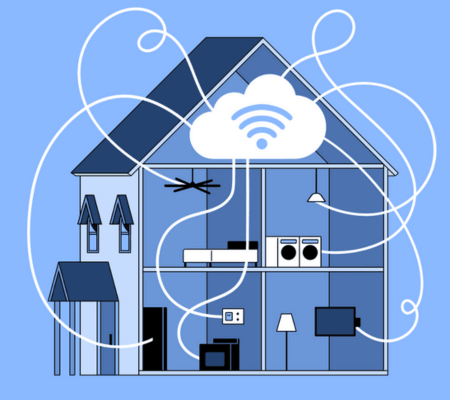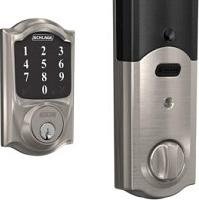Welcome to our blog post on storm door lock cylinder replacement! If you have a storm door installed in your home, you understand the importance of keeping it secure. After all, your storm door is often the first line of defense against unwanted intruders and harsh weather conditions. But what happens when that trusty lock shows signs of wear and tear?

Whether you’re a homeowner or a DIY enthusiast, it’s important to know how to maintain and replace the lock cylinder on your storm door. Over time, these cylinders can become worn out or damaged, affecting the security and functionality of your door. In this article, we’ll guide you through the steps of replacing a storm door lock cylinder and provide tips for proper maintenance. So, let’s dive in and ensure that your home is secure with a properly functioning storm door lock!
Related: 5 Best Smart Locks for Storm Doors
Table of Contents
ToggleSigns That Your Storm Door Lock Cylinder Needs Replacement
Is your storm door lock not working as smoothly as it used to? It could be a sign that your lock cylinder needs replacement. Here are some signs to look out for:
1. Difficulty turning the key:
If you find yourself struggling to turn the key in your storm door lock, it may indicate that the cylinder is worn out or damaged. This can happen over time due to regular use and exposure to the elements.
2. Jiggling or wiggling of the key:
When inserting the key into the lock, if you notice excessive movement or play, it’s a clear indication that there is an issue with the lock cylinder. This can make unlocking and locking your storm door more difficult and less secure.

3. Key getting stuck:
If you have trouble removing the key from the lock after unlocking or locking your storm door, this is another sign of a faulty cylinder. It could be due to worn internal components or debris buildup inside.
4. Complete failure of locking mechanism:
If your storm door refuses to latch properly or doesn’t stay locked even when engaged, it’s likely time for a new lock cylinder. Ignoring this issue can compromise both security and convenience.
If any of these signs sound familiar, consider replacing your storm door lock cylinder sooner rather than later!
Related: Smart Locks for Screen Doors
Steps to Replace a Storm Door Lock Cylinder
Replacing a storm door lock cylinder may seem daunting, but with the right tools and instructions, it can be done easily. Here are the steps you need to follow:

1. Remove the old cylinder:
Start by unscrewing the screws on both sides of the storm door handle. Carefully pull out the handle and set it aside. Next, locate the set screw on the side of the lock cylinder and use an Allen wrench to loosen and remove it. Gently slide out the old cylinder from its housing.
2. Measure for replacement:
Take precise measurements of your old lock cylinder before purchasing a new one. This will ensure that you get an exact fit.
3. Install the new lock cylinder:
Insert the new lock cylinder into its housing, making sure it aligns properly with both sides of the door handle mechanism.
4. Reattach handles:
Slide in and tighten all screws securely to reattach both sides of your storm door handle.
5. Test functionality:
Before calling it complete, make sure to test your newly installed storm door lock cylinder by locking and unlocking it several times using your key or thumb turn latch.
Remember, if you’re unsure about any step along this process or encounter difficulties, consult a professional for assistance!
Materials and Tools Needed for the Replacement Process
When replacing a storm door lock cylinder, having the right materials and tools is essential for a smooth and successful replacement process. Here are some of the key items you’ll need:
1. New Storm Door Lock Cylinder:
This is the most important component. Make sure to choose a high-quality replacement that matches the specifications of your existing lock.
2. Screwdriver Set:
A reliable set of screwdrivers of various sizes and types will be needed to remove screws from the old cylinder and install the new one.
3. Pliers:
Pliers are handy for gripping small parts, such as retaining clips or screws, during disassembly.
4. Lubricant:
Having lubricant on hand can help ease any tightness or friction in moving parts of the lock cylinder.
5. Safety Glasses:
It’s always good practice to wear safety glasses when working with tools, especially when removing or installing screws.
6. Replacement Screws:
In case any of the original screws become damaged or stripped during removal, having extra replacement screws can save time and frustration.
7. Optional Tools:
Depending on your specific storm door model and requirements, you may also need additional tools such as an awl (for aligning holes), a drill (for creating new holes if necessary), or even a hacksaw (for trimming down an oversized cylinder).
Having these materials and tools readily available before starting the replacement process will ensure that you’re prepared for any challenges that may arise along the way!
Common Mistakes to Avoid During the Replacement Process
When it comes to replacing a storm door lock cylinder, there are certain mistakes that homeowners often make. By being aware of these common missteps, you can avoid unnecessary headaches and ensure a smooth replacement process.
One mistake to avoid is rushing through the removal of the old lock cylinder. It’s important to take your time and follow the manufacturer’s instructions carefully. Rushing could lead to damaging other parts of the door or even injuring yourself.
Another mistake is not properly measuring the dimensions of the new lock cylinder before purchasing it. Each storm door may have different specifications, so it’s crucial to measure accurately and choose a replacement that fits perfectly.
Additionally, failing to lubricate the new lock cylinder can cause problems down the line. Applying a small amount of graphite powder or silicone spray will help prevent sticking or jamming.
Using incorrect tools during installation is another common error. Make sure you have all necessary tools on hand before beginning the replacement process. Using improper tools can damage both your storm door and the new lock cylinder.
Neglecting regular maintenance after installing a new lock cylinder is an oversight many homeowners make. To keep your storm door functioning smoothly for years to come, be sure to clean and lubricate it regularly according to manufacturer guidelines.
By avoiding these common mistakes during your storm door lock cylinder replacement process, you’ll save yourself time, money, and frustration in maintaining functional and secure entryways for your home!
Tips for Maintaining Your New Storm Door Lock
Once you’ve replaced your storm door lock cylinder, it’s important to keep it properly maintained to ensure its longevity and effectiveness. Here are some tips to help you maintain your new storm door lock:
1. Regular Cleaning: Keep the lock clean by wiping it down regularly with a soft cloth dampened with mild soap and water. This will prevent dirt, dust, and debris from accumulating inside the lock mechanism.
2. Lubrication: Apply a small amount of graphite or silicone-based lubricant to the keyway and moving parts of the lock cylinder every six months or as needed. This will help reduce friction and ensure smooth operation.
3. Check Alignment: Periodically check that the strike plate aligns properly with the latch when closing the door. If necessary, adjust the strike plate position or tighten any loose screws to ensure a secure fit.
4. Test Operation: Test your lock frequently by inserting and turning the key, ensuring that it engages smoothly without any sticking or resistance.
5. Replace Batteries (if applicable): If you have a keyless or smart lock system that uses batteries, make sure to replace them as needed according to manufacturer instructions.
By following these maintenance tips, you can extend the life of your storm door lock and enjoy continued security for years to come!
The Benefits of Upgrading to a Keyless or Smart Lock System
Are you tired of fumbling for your keys whenever you approach your storm door? It’s time to consider upgrading to a keyless or smart lock system. These innovative solutions offer numerous benefits that can enhance your home’s security and convenience.
One major advantage of keyless or smart locks is the elimination of physical keys. With a traditional lock, there’s always the risk of losing your keys or having them stolen. But with a keyless system, you no longer have to worry about carrying around bulky keychains or making spare copies for family members.
Another benefit is the added flexibility these systems provide. Many smart locks allow you to create unique access codes for individuals, such as family members, friends, or service providers. This means you can easily grant temporary access without sharing physical keys.
In addition, some smart locks offer remote control capabilities through smartphone apps. Imagine unlocking and locking your storm door from anywhere in the world! This feature comes in handy when you need to let someone into your home while you’re away or if you forget whether you locked up before leaving.
Furthermore, keyless and smart locks often have advanced security features like biometric sensors or encryption technology. These measures ensure that only authorized individuals can enter your home, providing an extra layer of protection against potential break-ins.
Upgrading to a keyless or smart lock system can increase the value and appeal of your property. Potential buyers are increasingly drawn toward homes with modern security features, so investing in this upgrade could pay off in terms of resale value down the line.
In conclusion (not conclusive), upgrading to a keyless or smart lock system offers multiple advantages, including enhanced security, convenience through remote control capabilities, and flexible access options for different users. Don’t miss out on enjoying these benefits by sticking with outdated traditional locks – make the switch today!
Conclusion: Invest in a Quality Storm Door Lock for Safety and Convenience
Investing in a quality storm door lock is essential for ensuring the safety and convenience of your home. A secure lock not only protects against potential intruders but also adds an extra layer of security to your property. By replacing a worn-out or faulty storm door lock cylinder, you can enhance the overall security of your home.
Recognizing the signs that indicate the need for replacement, such as difficulty in locking or unlocking the door, is crucial. Once you’ve identified these signs, follow the step-by-step process outlined above to replace the old cylinder with a new one.
When choosing a replacement lock cylinder, consider factors like durability, compatibility with your existing hardware, and ease of installation. Opting for high-quality materials and reputable brands will ensure that your new storm door lock stands up to wear and tear over time.
After installing your new lock cylinder, it’s important to maintain it properly. Regular cleaning and lubrication will keep it functioning smoothly and extend its lifespan. Additionally, exploring advanced options like keyless or smart locks can offer even more convenience and features tailored to your needs.








